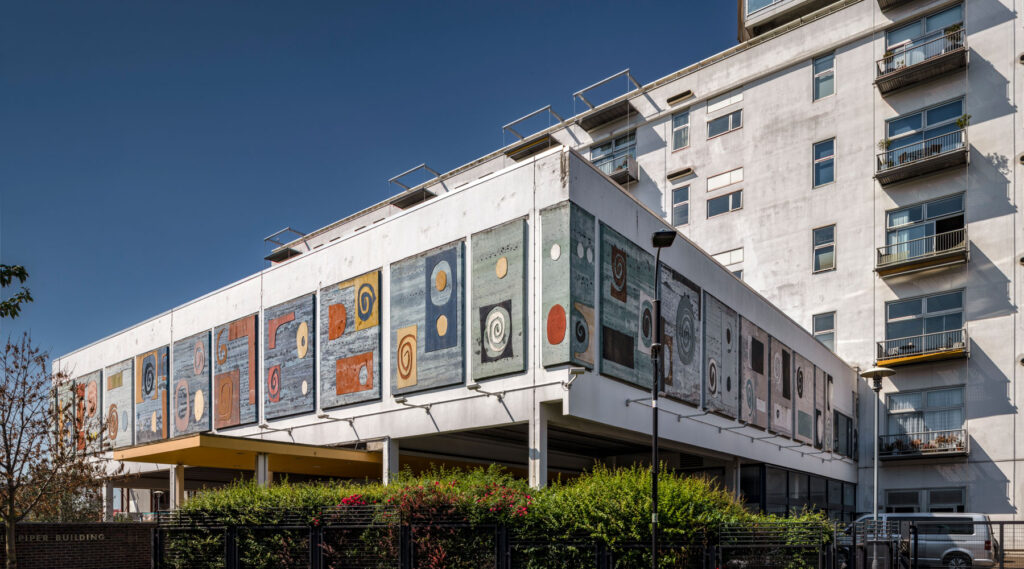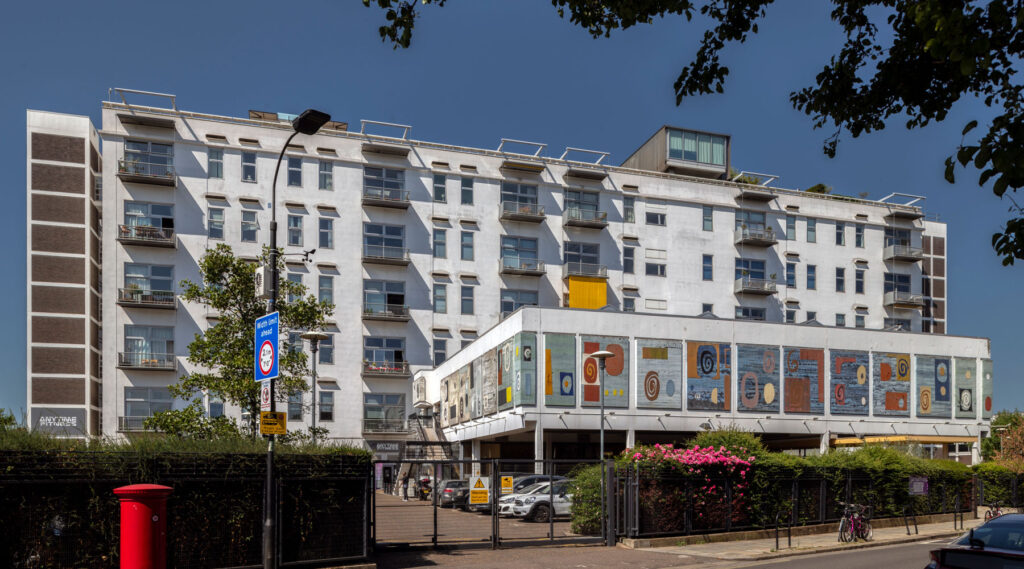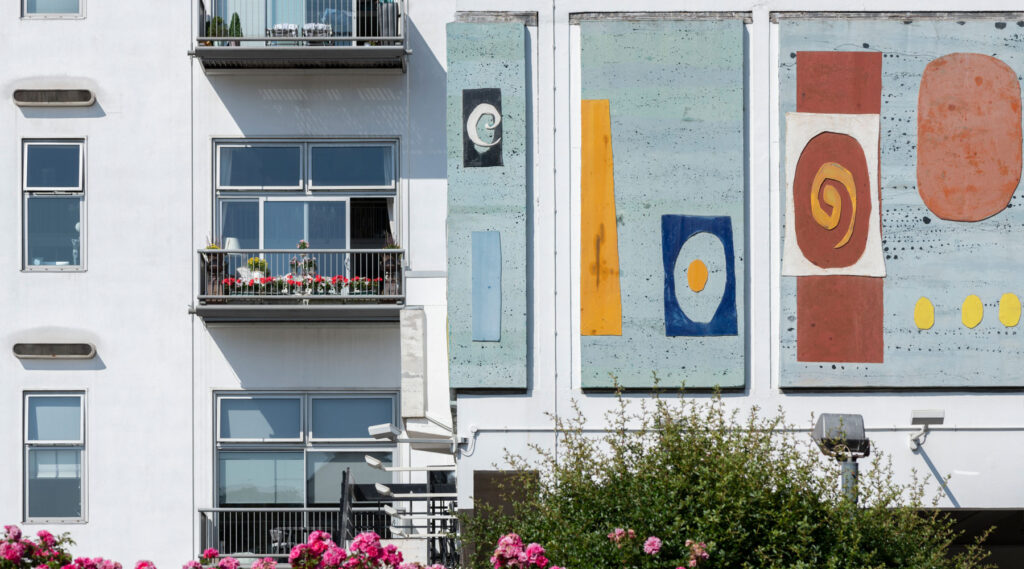A series of giant abstract decorative panels on a former British Gas building have been given protection with a Grade II listing, along with the former exhibition building they are attached to. The panels, made in the 1960s by the celebrated artist John Piper are also one of the artist’s largest single commissions, thought to be second only to his Baptistry window at Coventry Cathedral.
The Piper Building was built in the 1950s as a laboratory complex for The North Thames Gas Board. Originally named Watson House, the building formed a divide between the established residential areas which spread south from The New Kings Road and the warehousing and light industry which had historically grown up along the river wharves. The concrete construction was an innovation of the era and John Piper was commissioned to create giant murals, illustrating the theme of ‘The Spirit Of Energy’ which still crown its entrance.
In the mid-1980s the Gas Board moved out and the 250,000 sq ft block lay empty. By the 1990s it was destined for demolition when a commercial developer, Crispin Kelly of Baylight, set about redevelopment, transforming the main block into 70 apartment spaces and over 110,000 sq ft of commercial space mainly on the ground floor and adjoining buildings.
The listing has been welcomed by the Twentieth Century Society, and follows an application made with support from architect Stephen Levrant RIBA. The listing provides enhanced protection to the panels and former exhibition block and celebrates their artistic and architectural merit as well as their historic significance.
Piper collaborated with Gillespie and Manzaroli Associates to produce the panels between 1961-62, and they have the hand-made appearance of paper cut-outs but made to an architectural scale in industrial materials.
This commission was Piper’s first time working with fibreglass and is only the known example of a permanent outdoor artwork in John Piper’s large and diverse body of work, and the building is integral to the way in which the artwork is encountered and perceived.
Tom Foxall, Head of Region, London and the South East, Historic England, said: “From painter and official war artist to printmaker and stained glass designer, John Piper was a major figure in 20th century British art with an extraordinary breadth of work. These panels exemplify Piper’s continual experimentation with new materials and are a joyful, much-loved local landmark that meets the high bar for listing.”
Post-war public art
The Piper panels fit into a wider trend of outdoor art at the time. The years following the Second World War saw a rise in the creation of public art, designed to bring public spaces back to life as the country began to repair its shattered towns and cities.
This idea was brought to a wide audience through the Festival of Britain in 1951. Visitors to the Festival saw around 30 sculptures and more than 100 murals integrated into the buildings and spaces of the South Bank site, commissioned from artists including John Piper. New or alternative materials such as concrete, mosaic and fibreglass were popular as they lent themselves to texture and relief and could withstand the elements.
The heritage listing is here.










I used to hate these squiggles but visiting a friend opposite, familiarity bred um acceptance and now I’m very pleased to hear that they’re there in perpetuity.